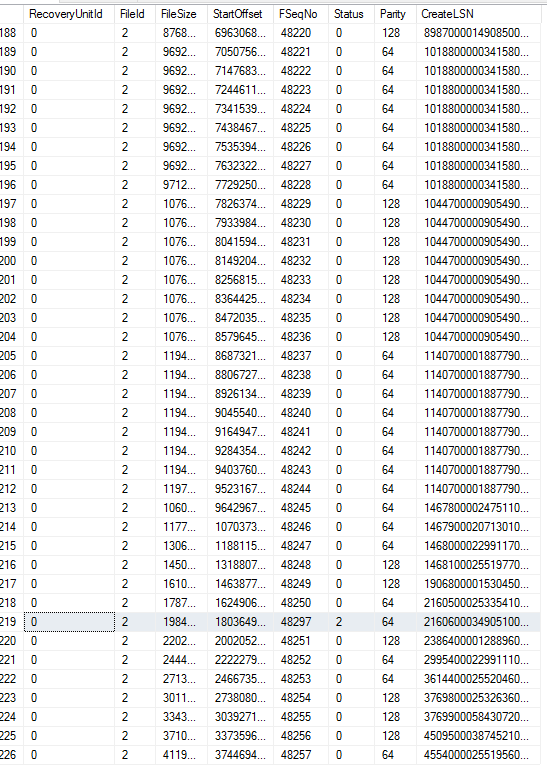Hi @SQLLover21 ,
Please run DBCC LOGINFO, and share us the output. This will give you information about your virtual logs inside your transaction log. The primary thing to look at here is the Status column. Since this file is written sequentially and then looped back to the beginning, you want to take a look at where the value of "2" is in the output. This will tell you what portions of the log are in use and which are not in use Status = 0.
If your transaction log that is not growing, and you’re taking regular log backups, but the log_reuse_wait_desc remains LOG_BACKUP, this is because zero VLFs were cleared when the previous log backup was performed.
How can that happen?
Imagine a database where there’s very little insert/update/delete/DDL activity, so in between your regular log backups there are only a few log records generated, and they’re all in the same VLF. The next log backup runs, backing up those few log records, but it can’t clear the current VLF, so can’t clear log_reuse_wait_desc. As soon as there are enough changes in the database that the current VLF fills up and the next VLF is activated, the next log backup should be able to clear the previous VLF and then the log_reuse_wait_desc will revert to NOTHING. Until the next log backup occurs and isn’t able to clear the current VLF, in which case it will go back to LOG_BACKUP again.
So LOG_BACKUP really means “either you need to take a log backup, or the log records that were backed up were all in the current VLF and so it could not be cleared.”
Refer to the blog Why is log_reuse_wait_desc saying LOG_BACKUP after doing a log backup?
> The log file has 99% of free space
Did you using DBCC SQLPERF(logspace) to check this?
If the response is helpful, please click "Accept Answer" and upvote it, as this could help other community members looking for similar thread.


